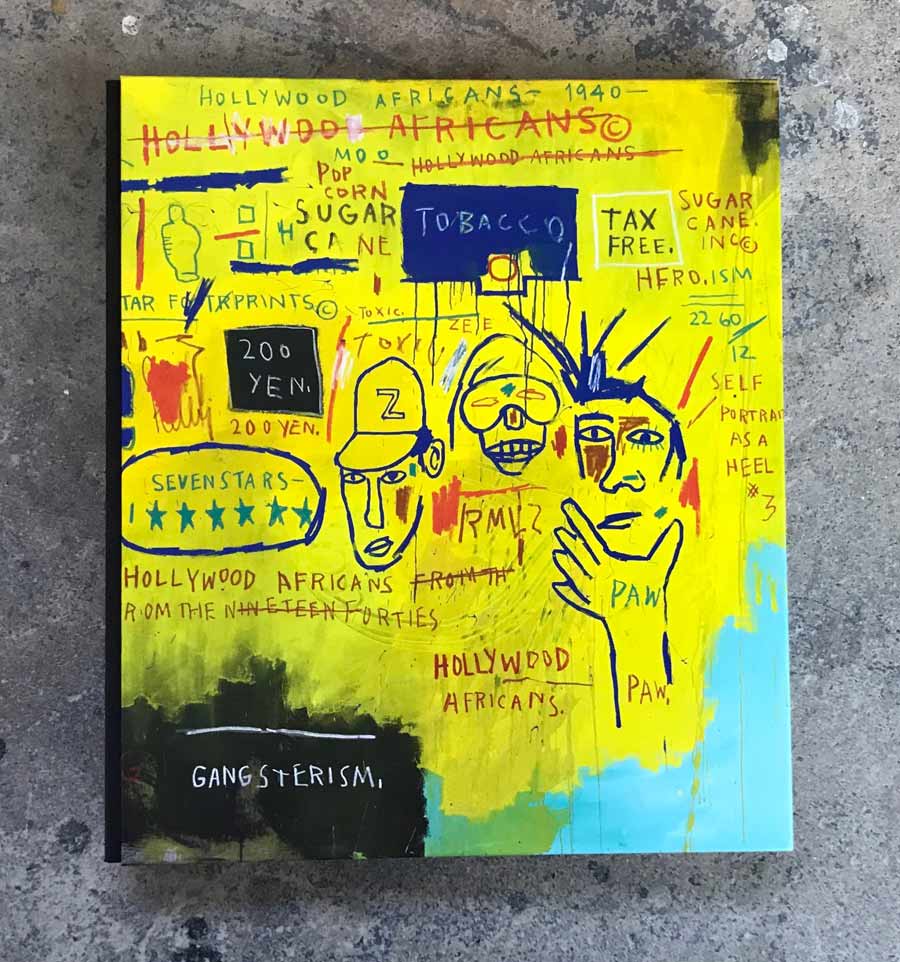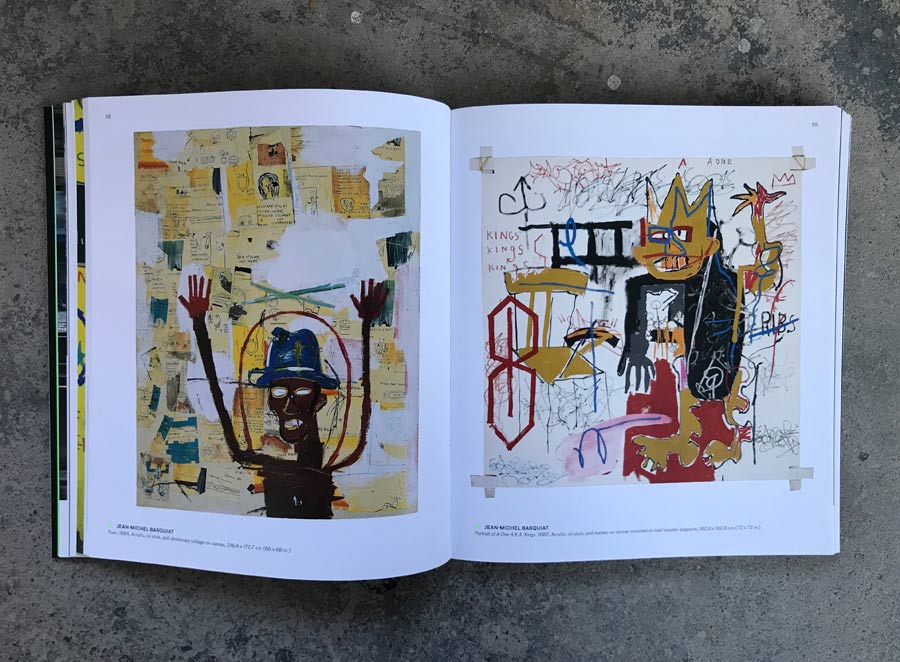To accompany the exhibition “Writing the Future: Basquiat and the Hip-Hop Generation” at the Museum of Fine Arts in Boston, a substantial catalogue has been released to support the show and place the artist in context with his time as well as his influence on the future as it pertains to contemporary art and so-called art in the streets.

Accessible and erudite, the catalogue unpacks the social connections, the various emerging music, art, and performance sub-scenes of “Downtown” and “Uptown” New York culture, the opaque underpinnings of the dominant culture, and the urban syntaxes that formed this young Brooklyn artist and his work in the 1970s and 1980s. To faithfully set the stage for this story; to conjure the atmosphere, the moment, the context that Basquiat evolved himself into, you would need to create an interactive urban theme park with an impossible set design budget, a cacophonous sound-music map, a handful of public policy and political advisors, an anthropologist, a warehouse of costumes, too many actors, too many attitudes, and even more drugs.

Considering the elements of this planetary system, one that drew protagonists into layers of swirling space in overlapping concentric patterns at a time where “high” and “low” distinctions were melting and crashing into one another, a viewer is still drawn physicality of the works and artifacts, the hand and the gesture. If you are going to talk about expressionism and its reaction to stimuli, you’ll also want to appreciate the tactility of this art-making process, one that was endemic to Basquiats’ daily existence in the studio and on the streets of Brooklyn and Manhattan.
Editor of the “Writing the Future” catalogue, Liz Munsell, delves directly into that physicality in her essay, an experiential process that he shares with the viewer. “In several areas of the composition, Basquiat seems to have taken his own hands directly to the painting’s thick, wet surface, dragging his fingers across it into an area where he painted the hand of his self-portrait,” says Munsell. Willfully enigmatic at times and decidedly cryptic in his textual references, one cannot argue with this, an ultimate form of mark-making.

While Munsell is addressing something tangible, she is also witness to the spirit. We take it as an apt response to the greater challenge of decoding the works; presenting “the shattered poetics of Jean Michel Basquiat lyric memory cabinets.”
Basquiat scholar Carlo McCormick, who also happens to have been a full participant and observer of the ratty and glittering decline of New York during Basquiats’ rise, opens the book. Within his lyrical prelude to the artists’ ascent is a similar effort to place the moment; a sea of creative talents from privilege and without, trying their hand at sinking or swimming on the gallery of the streets, seizing a moment that reshaped a sleepy and self-satisfied gallery system that had painted itself into a proverbial white-box (and white-skin) corner.

“It’s all a crazy quilt conversation, talking in wild style tongues from the train yards to the writer’s bench, from bewildered commuters and savvy fans to the posturing politicians with their broken-windows theories in vandal squads, from little nightclub art shows and the ad hoc outposts like Fashion Moda and the Fun Gallery to a global stage of major exhibitions from the primal voice of mark-making to the sweet sounds of the studio, where a generation of outlaws joined that historical confab of painters in the culture of canvas. It’s got a beat hard-scrabbled out like the scratching of those early playground turntablists, but it’s all about the language, transmuted beyond easy recognition, private in the most public of ways, the insider voice of the outsider externalizing the interior. It’s pure jive, freeform and freestyle, the deceptions of code carrying the truth of the heart, the lyrics to all our collective pain, anger, alienation, and hope writ large like an aerosol atom bomb.”
Talk about shattered poetics.

In fact, art in the streets was a direct respondent to trauma, inequity, dislocation, and the effects of the flight of capital– and if certain populations found it discordant, it was possibly because it functioned as a funhouse mirror – distorted and vaguely threatening. While Basquiat was self-promoting in the venues and manners he was most suited, he was placing a bet that society was ready, or would be soon, for the platform and the content and the challenge.
“Graffiti had found the speed at which it needed to be seen,” the graffiti writer, fine artist and street style branding wizard Futura says in a quote.
By chasing it and learning how to read these writings on the wall we would gain a better understanding of what was to come in the future.


Writing the Future: Basquiat and the Hip-Hop Generation. Published by MFA Publications on the occasion of the exhibition currently on view at the Museum of Fine Arts, Boston. Edited by Liz Munsell and Greg Tate with contributions by J. Faith Almiron, Dakota DeVos, Hua Hsu, and Carlo McCormick.
Other Articles You May Like from BSA:
"We may have lost the trains, but we've gained the whole world." That’s a quote on the wall in the new exhibition at the Bronx Museum spotlighting the work of Henry Chalfant. The quote comes from ...
Welcome to BSA Images of the Week! The sheer number of organic and community walls in Berlin means that you are exposed to a great variety of styles and opinions and perspectives through art ...
Our Weekly Interview with the Street Oh Baby! (Dan Witz) (photo Jaime Rojo) Dan Witz (photo Jaime Rojo) I am just a cowboy lonesome on the trail A starry night, a campfire l...
Durham is a historic city located in the northeast of England, known for its medieval cathedral and Norman castle, both of which have been designated UNESCO World Heritage Sites. It's also home to Dur...
We return for Part 2 of this nearly incandescent display space in the northern woods of Catalonia discovered this month by photographer Lluis Olive Bulbena. Catalonia, Spain. (photo © Lluis Olive...
 BROOKLYN STREET ART LOVES YOU MORE EVERY DAY
BROOKLYN STREET ART LOVES YOU MORE EVERY DAY










